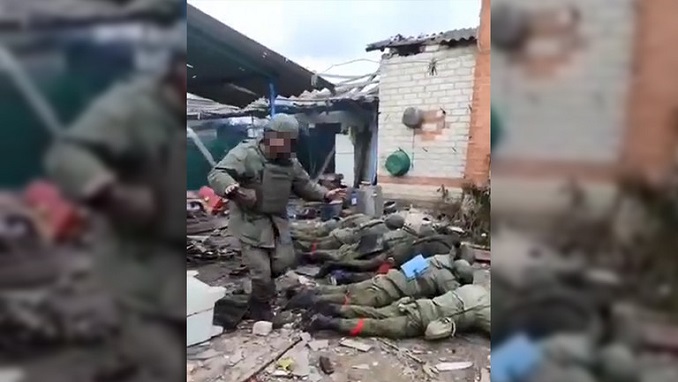The authenticity of videos showing the execution of captive Russian soldiers by Ukrainian troops that surfaced online last week has been verified by the New York Times which says servicemen appear to have been shot dead at close range.
The newspaper reported on Sunday that the clips show the grisly before-and-after scenes of the encounter in the village of Makeyevka in the People’s Republic of Lugansk mid-November, in which at least 11 Russians appear to have been shot dead at close range. The NYT, however, wrote that videos do not show how or why the Russian soldiers were killed.
After a video showing captured Russian servicemen first alive and subsequently dead surfaced on social media on Friday, the Russian Defense Ministry has accused Kyiv forces of committing a war crime which appears to be executed by troops in uniforms bearing insignia of the Ukrainian Armed Forces.
The footage that the ministry described as evidence of the deliberate and methodical murder, depicts soldiers in Russian uniforms surrendering before being shown lying on the ground, presumably dead.
The Russian Presidential Human Rights Council called for an international probe into the alleged incident that proves, as the ministry pointed out, the barbaric nature of the Kyiv government led by President Zelensky.
Its head, Valery Fadeev, described the incident as a demonstrative and audacious crime in which Russian servicemen were shot straight in their heads.
Claiming that Russians used a staged surrender to open fire on Ukrainian soldiers, Kyiv dismissed on Sunday Moscow’s accusations that Ukrainian troops had killed Russian prisoners of war (POWs) – in what Russia has described as a war crime- as they were surrendering.
Quoting extracts from the video footage in question, Ukraine’s commissioner for human rights Dmytro Lubinets said on Sunday that Russian servicemen in this case cannot be considered prisoners of war and that returning fire is not a war crime, demanding people who want to use the international law’s protection to kill must be punished.
Meanwhile, after Ukraine’s Russian-controlled Zaporizhzhia nuclear plant (ZNPP) was continuously shelled again during the weekend, the head of the International Atomic Energy Agency (IAEA) Rafael Grossi on Sunday urged stopping the madness and warned Kyiv and Moscow that they’re playing with fire. Both Russia and Ukraine traded blame for the shelling of ZNPP after more than a dozen blasts targeted the plant on Saturday night, some of which were witnessed by an IAEA team of experts.
IAEA demanded back in September for security protection and nuclear safety zone to be set up around the nuclear plant which is the biggest in Europe and currently controlled by Russian troops but still operated by its original Ukrainian staff.
Speaking to French broadcaster BFMTV later on Sunday, Grossi called the shelling extremely disturbing and unacceptable, demanding that both parties involved to stop playing with fire. The UN’s atomic watchdog chief emphasized that it was clear that the strikes were no accident and that the people who were doing that knew where they are hitting – the site of this significant nuclear power plant.
